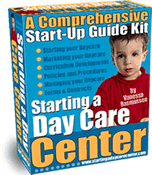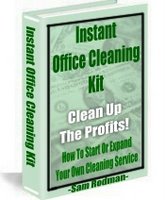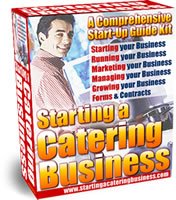After reading
Step 1 – going to
Step 2PUT IT ALL IN WRITINGOnce you and your advisors, as well any family members or partners, start discussing your issues for
retirement plan, you'll begin to appreciate the need to put it all in writing.
Why in writing? Setting out the key fundamentals and stages of your exit strategy on paper will help give you a clear picture of what needs to be done and when. It's important to have a written plan in circulation, particularly in family-owned businesses, because you will need others' input and it can help avoid disappointment or mis-communication down the road. A written
retirement plan should include:
1. Long-term business goals: While this doesn't have to be a developed strategic plan for the business, it should outline how the current ownership and others see the business rising in years to come. This could include a mission statement, a vision for the future, summary of strengths and weaknesses and goals achieve the long-standing strategy.
2. Financial statements & issues: Mainly for family members, candidates and others not common with the operating numbers, this section includes income statements, balance sheets and cash flow statements. The purpose of these reports is to provide a snapshot of your business' assets, liabilities and taxes.
3. Owner's retirement requirements: Include an appraisal of the owner's personal financial situation, showing the amount of investment in the business and income needs in future years. In cases where there is a shortfall in income needs for retirement, the retirement plan needs to outline options to accurate the deficit If the business is funding the owner's retirement, is it through a formal
retirement plan,
life insurance or payments from future earnings? This section can also address the estate planning needs and strategies to be adopted by the owner. It should also make clear how and when the origin owner will capitalize on the investment in the business; it's important for successors to know the presentation objectives and timing needed.
4. How to recognize and announce a successor: State what types of leadership skills, education levels and other talents the business will need The retirement plan should also outline the method by which candidates will be identified, trained and a successor declared.
5. Ownership and management organization: Particularly in family-owned businesses, it's important for the owner to set out the ownership rights and business responsibilities of key family and employees. As well, the retirement plan needs to speak to the separation of power in the family, voting rights and whether spouses, in-laws or other relatives can hold shares. A new shareholders' agreement may also have to be part of this section of the retirement plan
6. Dangerous path and schedule: A critical path of events is needed, ranging from the close dates of educational requirements for possible successors to the transition date. For example, does the owner have a specific retirement age, such as 65 or 70 years old?
7. Communication plan: Also important in the planning process is deciding on a communication plan for other family, shareholders, employees, customers and professional advisers. The plan can also speak to risk management efforts needed to ensure unexpected events do not complicate the retirement. Other aspects of the written
retirement plan, such as legal or tax steps wanted can be hammered out with professional advisors. When the plan is in first-draft form, it should be spread to family members and even employees for comments it’s important to be open to criticism, possibly using the family council sessions to deal with problems.
8. Revising Your Shareholders Arrangement: When creating and implementing your plan, one of the first things your legal advisor will want to address is your shareholders agreement. It's a critical element since it speaks to so many of the core retirement issues, including:
•
Partition of ownership, power and share structure
• Roles and responsibilities of shareholders
• Composition of the board and voting rights
• Structure for resolving shareholder disputes
• Options in the event of disability, divorce and other unforeseen conditions
• Buy-sell necessitiesIn some cases, a
retirement plan will require a new shareholders agreement to allow for estate planning, share incentives for successor candidates and non-voting shares for non-active family members.
9. Buy-Sell Agreements: Another important legal document to believe in implementing a
retirement plan is the
buy-sell agreement. These agreements give liquidity for an estate and business continuity in the event of the death, disability or retirement of an owner. Buy-sell agreements set out terms and conditions for acquiring and selling interests in the business. The price offered must be fair and logical. The other owner also has the right to turn the offer around and want the potential acquirer to sell for the same price. One variation is the "wait and see"
buy-sell agreement, where the business itself has the first option to purchase a deceased's interests. Existing shareholders then have the option to purchase any stock not bought by the corporation. The business must finally buy any stock left over. This type of agreement gives the surviving family an option to "wart and see" how money is best taken from the business. Naturally, these agreements have a life insurance component that allows the family to buy the shares or use the policy proceeds to lend money to the company for the purchase.
Speaking Of Insurance...Not to be forgotten in your retirement plan is the need for sufficient
insurance coverage. For example, under a buy-sell agreement, co-owned businesses can use insurance to finance the purchase of a shareholder's interests in the event of death or incapacity. A
life insurance policy for right amounts can be purchased for each director so that the proceeds can be used for a quick purchase without straining the business. Also, another option to think is "key person insurance". This type of insurance helps reimburse a business for any financial losses due to the death or long term disability of an essential person. In some cases, key person insurance offers tax compensation.
Key person insurance covers the business, but what about your own earnings? Mainly in cases of short-term disability, the incomes of owners and key employees should be protected. A sudden illness or accident can cause you to be missing from the business for weeks and sometimes months. A
disability insurance policy can supply income for the short-term or longer. These days, there are many types of disability defense, ranging from monthly income replacement to coverage for individuals needing long-term care. One of the newest innovations is "critical illness insurance," which pays out a bump sum settlement soon after the diagnosis of a life-threatening illness or disease.
Lining up Financing OptionsWhether it's a family member, key employee or third party assuming ownership, establishing some
financing options well in advance of the owner's retirement may help make the transition easier. Actually, in family businesses, it's possible to exploit financing techniques to pay out a founding owner before the actual transition date.
Traditional financing options for retirement include:
•
Secured loans, based on hard assets
• Subordinated debt, which is used when cash flow is strong
• Equity investmentsIn many family-owned businesses, hard assets fall short of securing the loan needed to fund the owner's transition. Subordinated debt and equity can often make it happen. Profitable lenders taking on retirement financing usually conduct thorough due assiduousness and review past performance, management expertise, cash flow patterns and earnings. These financing techniques can let a buyout by heirs or others over time to be funded by the business itself. By tax planning techniques such as estate freezes, the owner can begin transferring shares in the business to family before the transition. A second round of subordinated debt over a few years may then help complete the funding of the owner's retirement, with the business making the payments.
Ever more, owners are also looking to a wide diversity of
insurance products to finance either retirement-related tax liabilities or even the outright purchase of their interests, as well as protecting a retirement from unexpected events, such as illness.
Life insurance may be paired with a tax planning vehicle, such as a final life insurance trust. Financial and tax advice is needed to ensure the beneficiary is properly stated and to decrease or avoid probate taxes.
Insurance is also useful in helping finance installment payments. The installment sale is an extensively used retirement financing technique. The payments offer a stable stream of retirement income for the owner, as well as some capital gains reward.
Revisit Your Retirement Plan FrequentlyWith the accurate team of advisors, plenty of internal discussion about your needs and goals, and some think on legal, tax and financing options, you will be well on your way to a winning
retirement plan. How long will it take? Practically, it should be an ongoing process that is never complete until you have achieved your goal of a safe exit strategy from the business. Your professional advisors will at first need at least 3-6 months to correctly assess your business and options. In that time and beyond, you may also have to meet feedback from family, board members and others involved with the business. It's not strange for the fundamentals of a retirement plan to come together a year or more later.
Choosing a successor or potential buyer will also take time. A formal search inside and outside the business could be at least six months.As you near retirement or the exit moment, you should resume your plan to ensure it's on track. How do you know if your strategic plan is failing? Here are some signs:
•
Inflexible plan that isn't modified to the needs and abilities of the people involved or changing circumstances
• Excessively long timelines for promotions and opportunities, prompting key people to leave anyway
• Poor communication of the plan and a lack of understanding among family and employees of the actions, processes and requirements
• Selection of unmotivated people or people without qualifications
• Breakdown to hold individuals accountable for goals and requirementsWhere possible, your outside advisors can be helpful in the training of your successors. They can insert a degree of objectivity that owners may find difficult to maintain. Sometimes the most time-consuming and emotionally difficult aspect of implementing the owner's retirement plan is simply letting go.Most business owners are strong-willed and self-governing. They know what works and it can be difficult for them to leave the business they formed. The owner may have a financial risk in the business and want to remain involved with the operations beyond the retirement date. While comprehensible, this is sometimes awful for your business and your successor. Researchers have found the transition to new ownership and management is most easily achieved when the earlier owners engage themselves with other interests.
In the end, perhaps
the most important retirement objective you can set for yourself is to take benefit of the freedom to pursue the other opportunities life can offer.









